The 1950s was an interesting decade for the motorcycle industry. As countries began to show signs of economic improvement after the devastation of World War II, motorcycle manufacturers could begin to innovate in new directions. While affordable mobility was still an important part of a motorcycle’s design, the humble motorcycle was slowly being replaced by cheaper and more attractive cars as a means of transportation. Sidecars were on the way out, and the rise of the automobile was in full swing.
That’s not to say that motorcycles were declining in popularity. In fact, they were more popular than ever. The post-war surplus had made two-wheeled transit an attractive option for thrill-seeking youths, giving birth to famous motorcycling sub-cultures, such as the American chopper scene, or the European café-racer craze. Throw in some powerful engines and the best rock and roll music ever written, and you’ve got the perfect recipe for an iconic and influential decade.
The 50s spawned some of the most exciting and innovative motorcycles ever made, and there’s no way to boil the best models down into a short top list. But we’ve done our best. There are plenty that haven’t made the cut, and there are probably a few on the list that you’ll disagree with, but without any further ado: let’s take a look at some of the best motorcycles of the 1950s.
Triumph Tiger 110
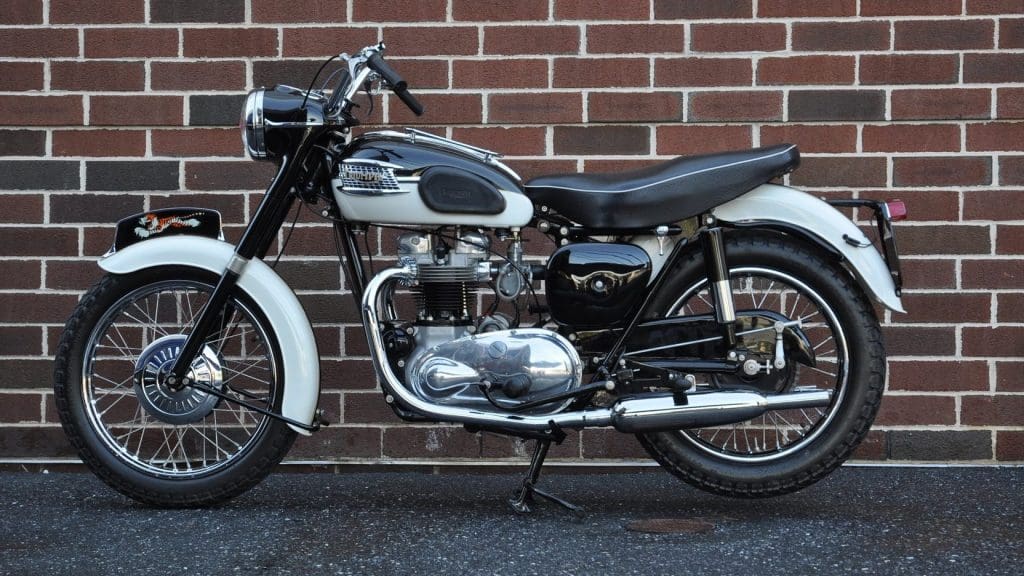
Produced between 1953 and 1961 at Triumph’s Coventry factory, the Tiger 110 is one of the most iconic motorcycles of the decade. While it might not be as fondly remembered as the Thunderbird, Bonneville, or other Tiger machines of the era, the Tiger 110 is a true testament to Triumph’s engineering prowess, and a shining example of a motorcycle produced during Britain’s motorcycling golden age, before the Japanese came in and turned the industry upside down.
Now, the Tiger 110 shouldn’t be confused with the Tiger 100. The regular Tiger 100 was in production for a much longer period, and it featured a 498 cc parallel-twin engine. The Tiger 110, however, boasted a larger 649 cc parallel-twin engine…and a higher top speed. You see, the Tiger 100 was named thusly because of its 100 mph top speed. The Tiger 110, as you can probably guess, could do 110 mph.
But what makes it a significant model of the era is the fact that it set a world land speed record in 1956. A modified Triumph Tiger 110 managed to clock an incredible speed of 214.17 mph at the Bonneville Salt Flats, with American racer Johnny Allen at the controls. It was this feat that led to the development of the Bonneville, which is arguably the most famous Triumph motorcycle ever made.
BMW R69
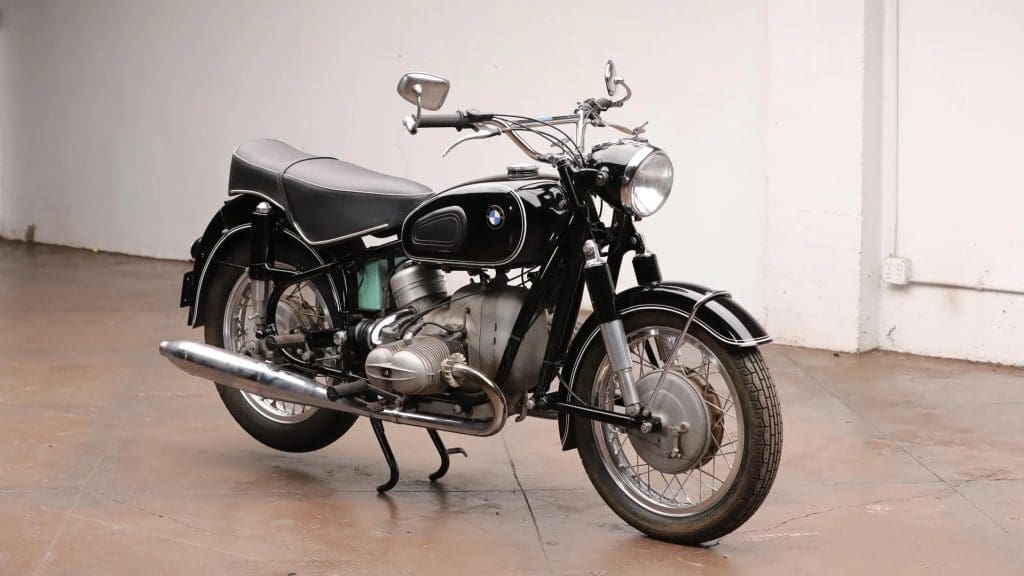
Next up, we’ve got a similar case of often mistaken identity. This is the BMW R69—not to be confused with the R69 US. The R69 was made between 1955 and 1969, while the often-referenced US model was only made for a brief period between ’68 and ’69. Since this is a list of 50s motorcycles, the US-variant doesn’t warrant a mention.
Instead, we have this fantastic BMW motorcycle that’s powered by a 594 cc shaft-driven horizontally-opposed twin engine. The power output was rated at a handsome 42 horsepower, which was very sporty for the day, and the BMW R69 was designed as a sports bike. While some R69 models came equipped with special lugs for the attachment of a sidecar, not all of them had the option.
Other notable differences between different R69 models include the front suspension, which could either come with a classic Earles Fork arrangement, or a more modern telescopic system.
No matter what configuration riders chose, all would agree that the BMW R69 was something special. An old Cycle World from the era likened these motorcycles to Rolls-Royces, stating that they’d be the journalist’s first choice for a touring bike.
Norton Manx
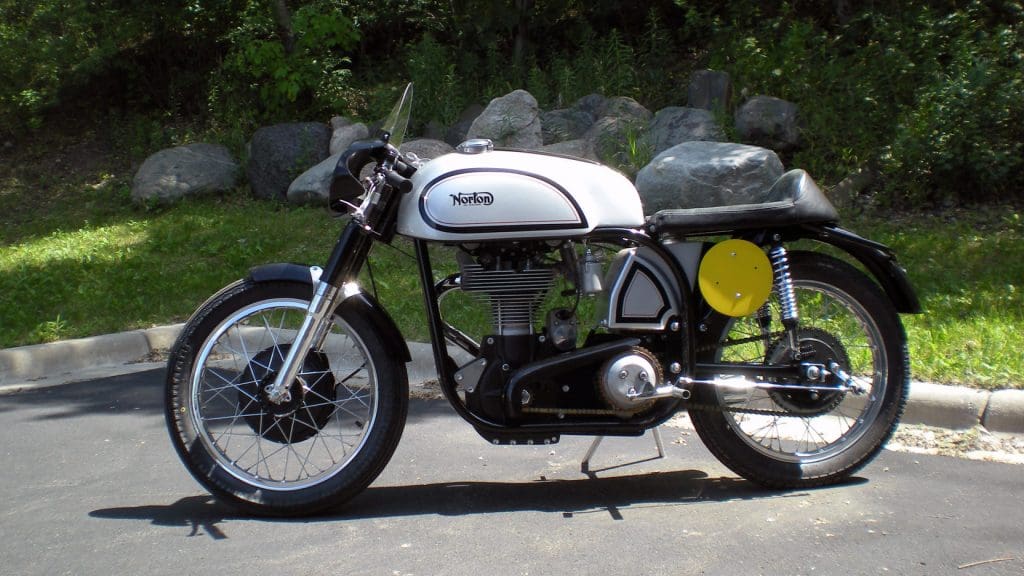
The Norton Manx first rolled onto the scene in 1946 as a post-war redesign of the older, tried and tested Manx Grand Prix. Unfortunately, these earlier Manx models weren’t quite as good as they could have been. However, that all changed in 1950 when the Manx was upgraded with a brand-new McCandless Brothers’ featherbed frame. The new frame allowed for responsive steering to match the Norton’s unbridled power.
While the Manx famous for being available in both 350 cc and 500 cc form, it’s the larger displacement that we’re here to talk about today. It boasted a potent 499 cc 2 valve DOHC air-cooled single-cylinder engine that produced up to 54 horsepower (depending on the stroke of the engine, and the tune) and hit top speeds of up to 140 mph.
The dream was short-lived though, as the production of the Manx came to a halt in 1962, with a few models being produced into 1963. As we’re all well-aware, the British motorcycling industry was about to enter a downward spiral…
Today, the Norton Manx is seen as a serious classic, and you don’t have to look too far to find an image of one adorning a motorcycle magazine’s cover or sitting in pride of place as a header image on a classic bike website. It was a powerful and advanced motorcycle in its day, but today it mainly serves as head-turning eye-candy.
Ducati 98
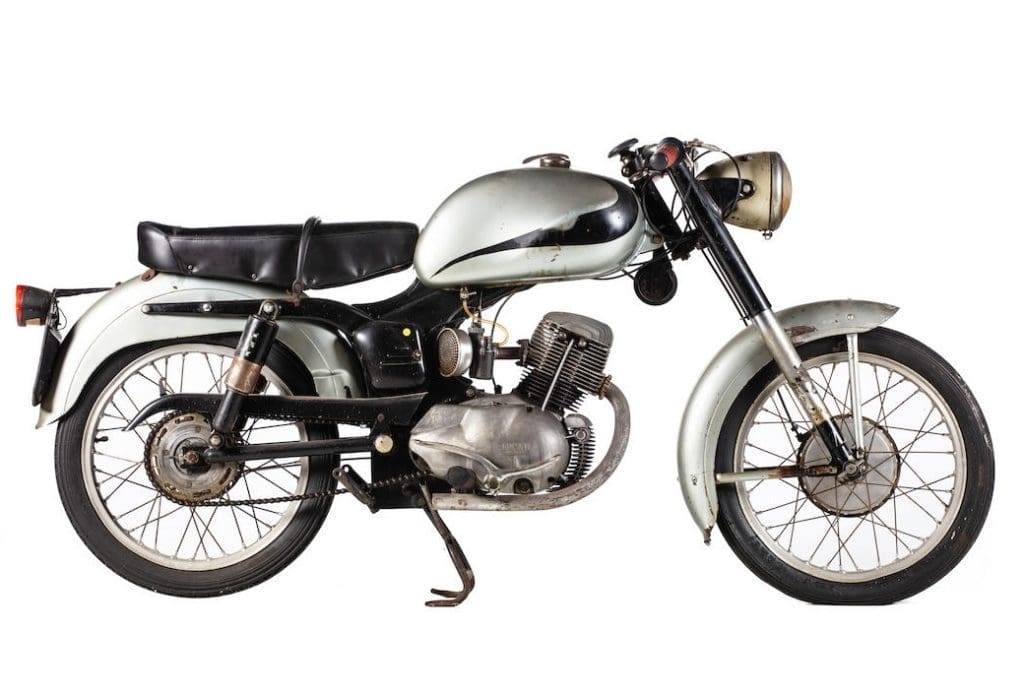
Next up, we’ve got the Ducati 98. The Ducati 98 range featured a number of models, such as the 98, 98N, 98T, 98TL, 98 Sport, and the fabled 98 Super Sport. We’re looking at the vanilla 98 model. It was made by Ducati between 1952 and 1958, and it helped bring the Ducati name to a wider ridership.
While many other Ducati motorcycles of the day focused on being cheap mobility options, the 98 was something different. It was designed less as practical and economical transport but as a luxury motorcycle. Kind of. It featured race-inspired features, a stylish aesthetic, and a surprising level of performance.
When the idea of the 98 was dreamed up, it was assumed that it would be a low-performance and bare bones machine, but the finished product was the opposite. In fact, some may argue that the 98 was indeed Ducati’s first true sports motorcycle. It even had a decent amount of success on the racing circuit.
Unfortunately, despite positive reviews, the bike suffered from being too expensive. Today, however, Ducati 98 models are incredibly sought after—particularly the 98 Sport.
Triumph 6T Thunderbird
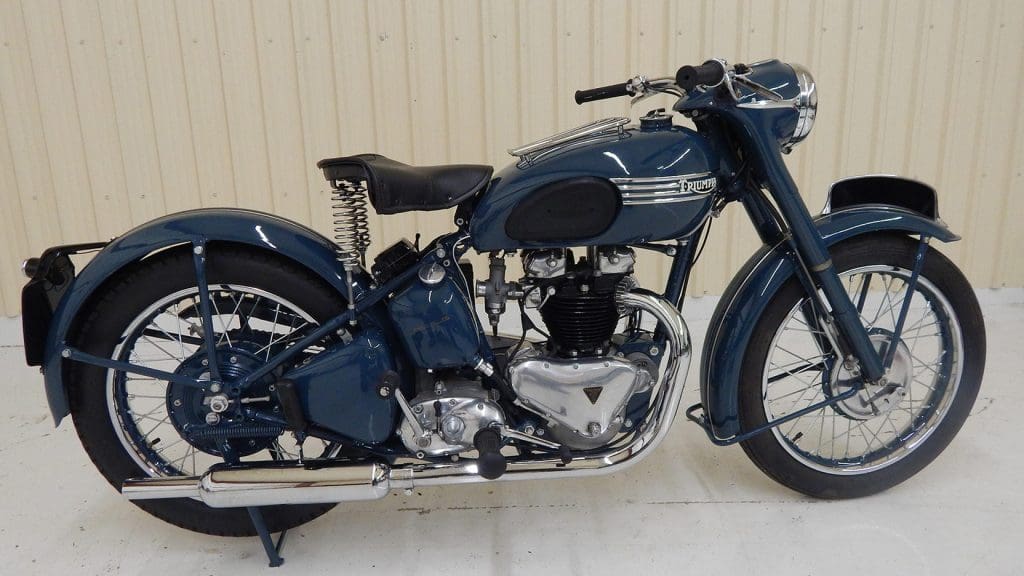
The Thunderbird name has been used by Triumph many times, but it all began with this first model. First introduced in 1949, the first generation of Thunderbird models remained in production until 1966. While there are many Triumph models from the 50s that could go on this list, we think the Thunderbird is arguably one of the most famous.
Designed to try and capture riders from the American market, the 6T Thunderbird was given a larger engine, a more-American design, and plenty of press coverage. The engine itself was a variation of the outgoing Speed Twin’s motor. Using the original 500 cc parallel-twin unit, Triumph bored it out to 650 cc to allow it to deliver the kind of power that the American market required. The result was an impressive 34 horsepower which could hit top speeds far north of 92 mph.
The secret to the Thunderbird’s enduring success and one of the main reasons that it must be included on any list of 50s motorcycles is that it took a starring role in the 1953 film The Wild One. Marlon Brando’s leading character rode a 1950 6T Thunderbird, firmly cementing the Thunderbird as one of the most iconic motorcycles of the decade.
MV Agusta 175
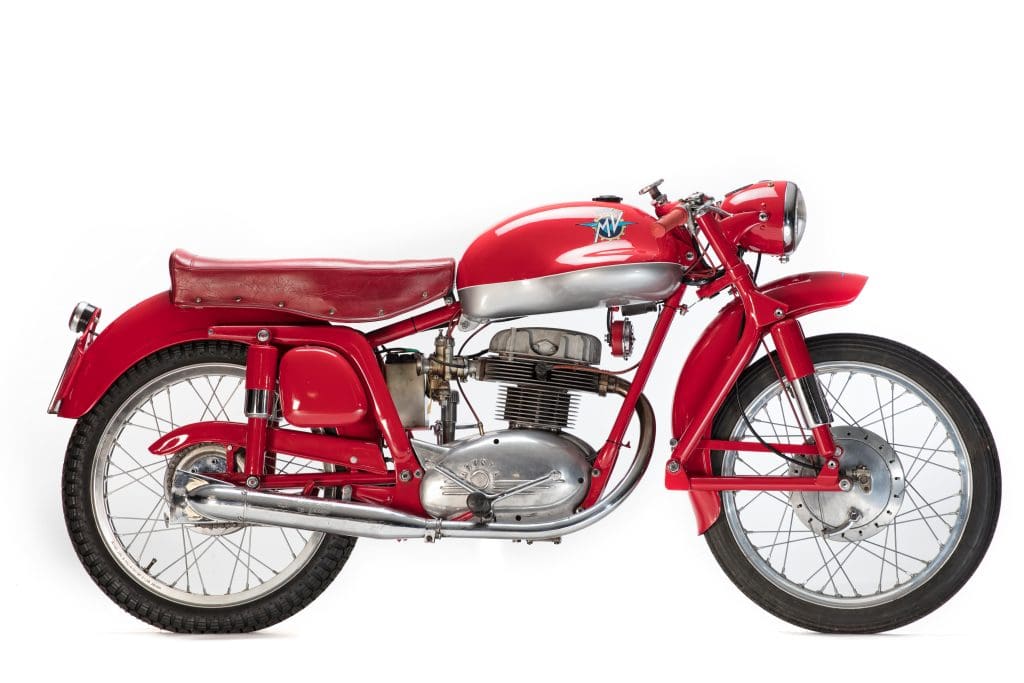
The MV Agusta 175 family was a group of motorcycles that were produced between 1953 and 1960. Despite being exotic Italian machines, they were surprisingly affordable at the time, and aren’t ridiculously overpriced if you find one at auction today. Which is remarkable for anything with MV Agusta written on the side of it.
These 175 models came in a variety of flavors, including touring, Gran Turismo, sports, and supersport trim. There were even two race-specification variants too. The earlier, budget models featured a small 172 cc single-cylinder four-stroke engine that produced between 8 and 16 horsepower, depending on the tune. These engines were a significant step for MV Agusta, as these models were the first four-stroke production motorcycles the company ever produced.
The more race-oriented 175 CSS is a particular favorite for old-school racing enthusiasts. These super sport machines were the road-going equivalents of the “over-the-counter” race models ridden to victory by the likes of Mike Hailwood. As a result, they were incredibly sought after, but they were very hard to get hold of, as only 500 of them ever went into production. They were incredibly rare at the time, and even rarer today! But if you’re a fan of the golden age of racing, then you should have no problem seeing the MV Agusta 175 CSS on this list!
Harley-Davidson Sportster
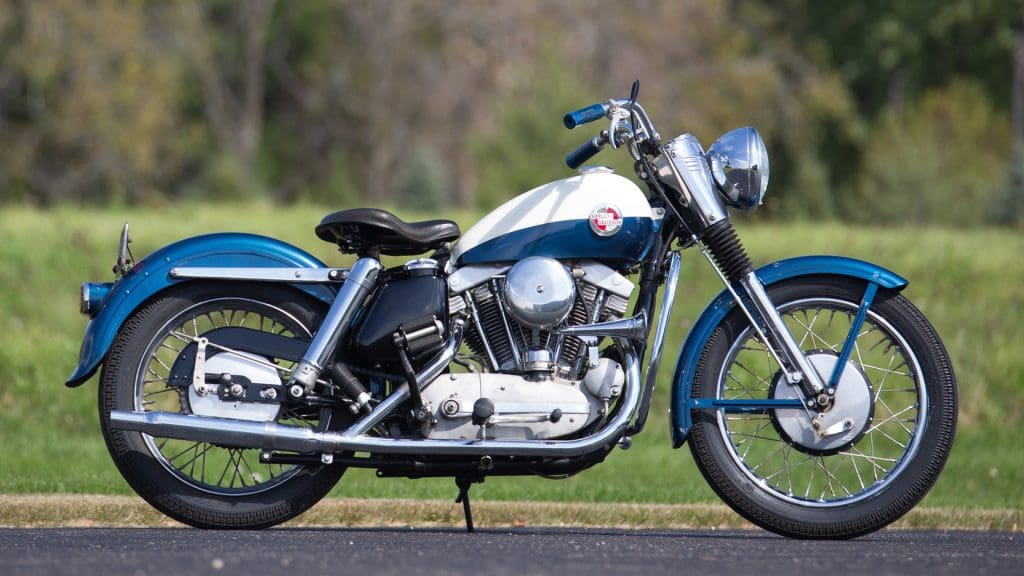
You can’t have a list of the best motorcycles of the 1950s without including the legendary Harley-Davidson Sportster. Today, the Sportster is ubiquitous but the story of the XL range dates back to the 1950s, to 1957 to be precise. The first Sportsters were very similar to the existing K-series models but featured an overhead valve Ironhead engine, rather than the side-valve flat-head arrangement.
Armed with the new OHV pushrod 883 cc air-cooled V-twin engine, the Sportster quickly developed a reputation for being powerful, reliable, and incredibly versatile. In fact, these early models won favor fairly quickly, and within a year they’d replaced the older side-valve K series models completely. And by the end of the decade, it was the second best-selling Harley motorcycle on the market, only beaten out by the Electra Glide.
Aside from the Sportster’s versatile nature, it also won fans by being a viable alternative to the likes of the British parallel-twins of the era, such as the Bonneville and Thunderbird. Instead, the Sportster was an American-made machine that could go toe-to-toe with the Brits. And needless to say, it was a success. Today, the XL Sportster is still a key pillar of the Harley-Davidson range, and seemingly always will be.
Honda RC160
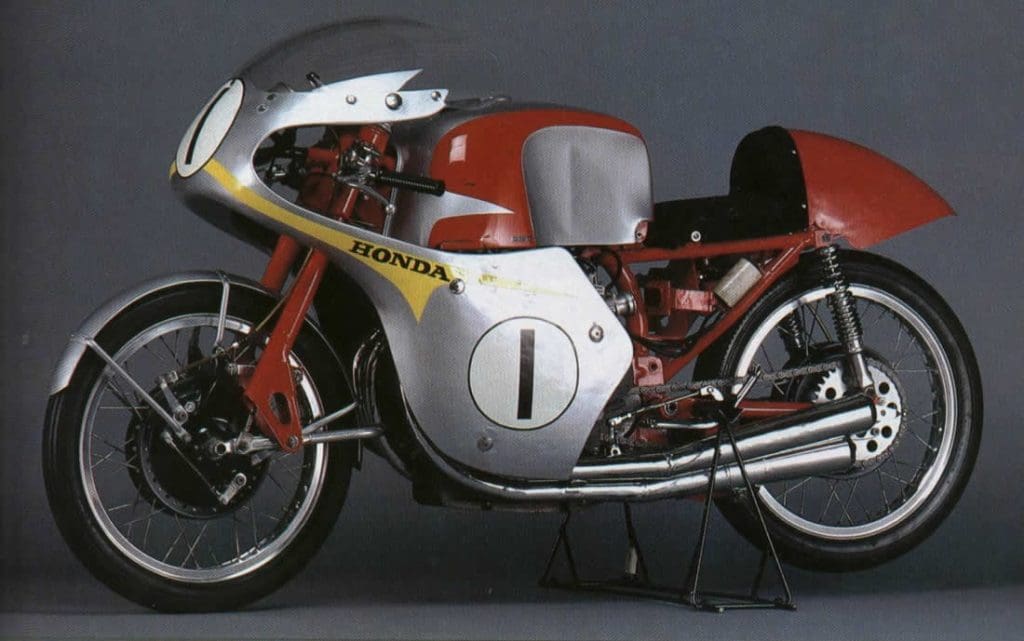
The beginning of Honda’s racing legend often starts with the Japanese brand’s first victories at the Isle of Man TT and GP victories, but the story actually begins before the 1960s even started, in 1959. In ’59, Honda arrived at the Isle of Man with a single model: the 125cc RC142. At the time, no one expected this little brand from Japan to make much of an impact. But how wrong they were!
At the beginning of the decade, Soichiro Honda vowed that one day a Honda motorcycle would race at the Isle of Man TT, and in 1959, it happened. Now, this inaugural year didn’t bring the headline-grabbing victories that Honda had hoped for, however, it did bring global interest to the Honda brand name, and dispel an old fallacy that Japanese goods were poorly engineered. By 1962, Honda would secure world titles with their racing machines, but before that could happen, Honda had to learn their craft.
The RC160 was the brand’s most formidable race machine of the 1950s. Unlike the 125 cc RC142 that debuted at the Isle of Man, the RC160 was a 250 cc four-cylinder machine with 35 horsepower on tap. It was never raced outside of Japan, but after learning a few tricks from watching the TT races, it was refined into a serious racing machine that would eventually upset the order of things. It was a precursor to Honda’s first racing golden age and an important model in motorcycling history.
Moto Guzzi V8 “Otto”
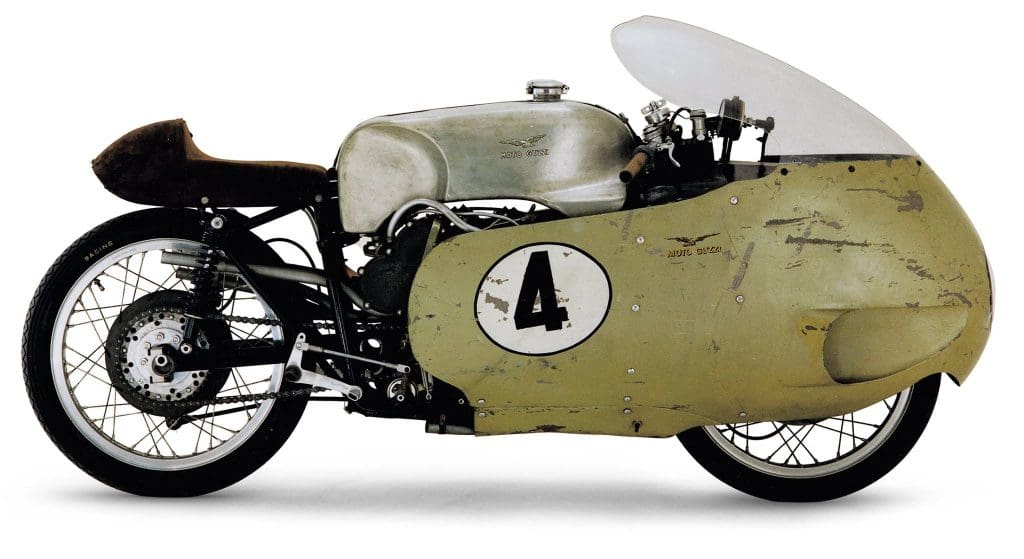
While we’re on the subject of innovative racing motorcycles, it would be unforgivable not to mention the Moto Guzzi V8. This is another racing machine, this time designed by the Italian engineer Giulio Cesare Carcano, specifically for the Moto Guzzi Grand Prix racing division. It was by no means the first V8 motorcycle to be built, but it was such an engineering masterpiece that it’s hard to ignore.
Powered by a 499 cc four-stroke, liquid-cooled, V8 engine that produced a massive 78 horsepower, the Moto Guzzi was powerful and fast. It could hit a top speed of 172 mph—a speed that wouldn’t be beaten or equaled for another 20 years in GP racing—thanks to the huge engine and advanced aerodynamic dustbin fairing. It had huge speed, but it had its fair share of negative points too.
The brakes and suspension were said to be awful, and the handling completely unsafe. Very few riders able to ride it (let alone race it) and many outright refusing to compete using one. Not only that, it was complex to construct and quite expensive to build. Naturally, the project didn’t last long, and only enjoyed a brief two years of racing between 1955 and 1957.
So why mention it? Well, there’s no denying that the V8 was unwieldy, but it was also incredibly powerful, highly advanced, and years ahead of its time.
Honda Super Cub
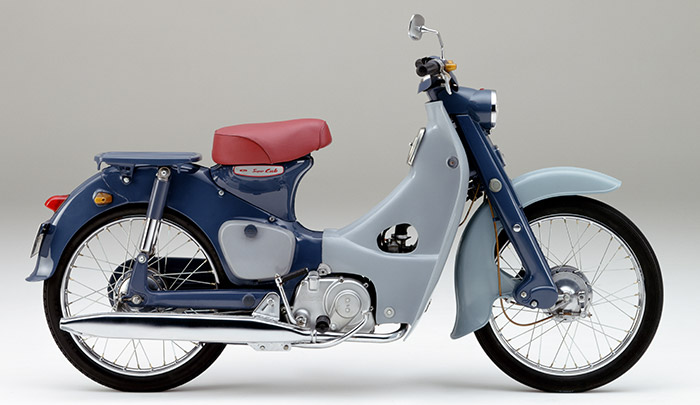
And of course, there’s no way you can write a list of the best motorcycles of the 1950s without including what many people would consider being the best motorcycle of all time: the Honda Super Cub. This small-capacity underbone scooter was first introduced in 1958 and has been keeping the world moving ever since.
Known in the US as the Honda 50, the Super Cub was the motorcycle that spawned the famous slogan “You meet the nicest people on a Honda.” While it wasn’t a sales success when it first rolled off of the production line, and overseas sales were plagued with customer complaints at the beginning, the Honda Super Cub has gone on to be the best-selling motorcycle of all time, with more than 100 million Cubs being sold worldwide.
The first Super Cubs featured a simple 49 cc horizontal air-cooled single-cylinder engine, mated to a three-speed, semi-automatic sequential gearbox. They were—and still are—cheap to buy, cheap to run, easy to maintain, and simple to operate. It’s for these reasons that the humble Super Cub can be seen working hard all over the globe, from London to Hanoi, and from Tokyo to Rome. And they’re borderline indestructible.
It may not be the most advanced of motorcycles, or the most powerful, but it’s arguably the most important motorcycle ever made, and certainly one of the best motorcycles of the 1950s.

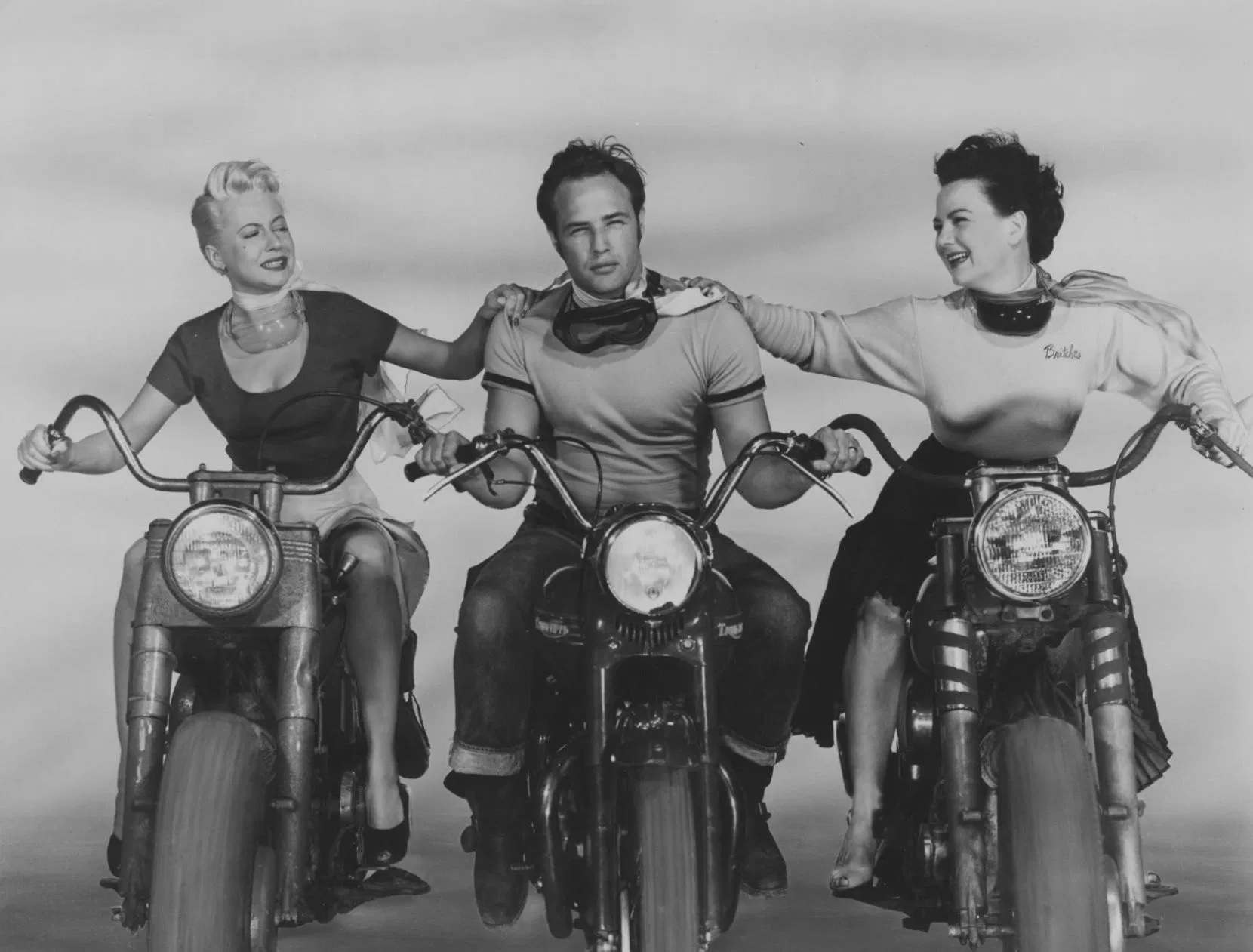

Even with your disclaimer considered, any list of the best motorcycles of the 1950s that doesn’t include the BSA Gold Star is more than a little suspect. The Manx may be the iconic 50s Grand Prix racer but the Gold Star is by far the definitive production racer. In 350 and 500 cc form Gold Stars won on the track, road and dirt – Isle of Man TT, Catalina, countless American flat track races, trials, etc… Besides all the racing successes it’s a gorgeous motorcycle!
You are absolutely correct, the Gold Star models were not only successful pro and club/privateer racers but led to the extremely popular lineup for BSA in the sixties with sales on par with Triumph.
Couldn’t have said it better john, I was thinking the same thing b4 I got to your cimment??
I was glad to see the Sportster and it’s original mission mentioned. While the Roadster variant that was produced from 2016 to 2020 was what the Sportster was the bike it was set out to be, it was a sales flop stateside. If one writes an article on great bikes of the 60s one would see both the Brits and the Sportster leading the decade. What I don’t and never will understand is in the early 60 with Hondas innovative race bikes how the British didn’t take them seriously.
No Vincent, no BSA, you know nothing….
What about Vincent Black Shadow, BSA and the list goes on. The Moto Guzzi was cool, but really didn’t influence anything.
You missed a great one the Mustang Stallion and the rest of the Mustang herd!
It was no small feat that Triumph made the list twice with both the Tiger 110 and the Thunderbird. Also the H-D Sportster was so good it’s still with us today.
Great article but, that Sportster isn’t quite right The ‘sportie’ motor is running a shovelhead top end which, would be an upgrade from at least the late sixties or seventies.
This was not uncommon back then, I actually ran an early sportster upper end on my 45″ flathead to get more speed like, almost 60mph!
?????
You do know that the Sportster was 1957 and the Shovel came out in 1966 don’t you?
Your statement makes absolutely no sense.
Actually, the sportster is correct, the engine in the ’57 sportster provided the engineering basis for the big twin engine that came out 9 years later. And of course, at the end of the decade, another upgrade appears in the form of the transition from generator to alternator systems which require a redesign of the engine case’s.
Absolutly, how can the subject of best motorcycles of the 50′ not only not include Vincent models, let alone feature them at the top? Bizarre. Where’s AJS?
Incorrect. While the Shoveled upper end was adapted to Sportster lower ends in the 60’s & 70’s, the Sportster shown has the period correct rocker boxes which were not changed until 1967. The Shovelhead designed rocker box was copied off the early Sportster rocker box design, as the Shovelhead did not come on the scene until 1965-66.
Also being said that the harley sportster sold the most harleys of the decade next to the electra glide. Excuse me we are talking the 50s right first electra glide came out in 65.
Indian Chief. No substitute.
My dad swore the zundapp 601 was his favorite bike he ever owned
Let’s jot forget the BSA 650 Lighting.
With due respect the Lightning couldn’t hold a candle to the BSA A10, starting off with the Golden Flash which was the workhorse of choice when pulling a chair, later upgraded to the Roadrocket which was deadly. In addition, your comment is not valid whatsoever as this article is about the best motorcycles of the 1950s. The Lightning was a unit construction Johnny Come Lately which was produced 1965 – 1972. The A10 was produced 1950 – 1963 which qualifies it for inclusion in this list, it should at the very least have knocked one of the two Triumph’s off the list.
No doubt the Norton Manx was a significant motorcycle in racing, but for a production bike of the 50s that should have been Norton’s Dominator with the legendary feathered frame.
What about the Vincent’s and the Norton 750 Atlas? Great article.
One of the best reviews of classic machines that I have ever read. You bestow credits where they belong, with the sole exception of the omission of the Gold Star. I witnessed the final triumph of Honda at the 1966 Hutchinson 100, Brands Hatch, where Mr. Hailwood swept through the field of British singles on the 297cc Six. The bike’s feral scream informed the Brits that their epoch was at an end.
What? No Vincent’s???
The simple B S A Bantham as a Telegram Boy I rode the 175 never let me down once the all weather over 3 Great years ?
I bought a 650 Ariel twin in 1958 and could always beat my mate in a race on his triumph 110 he said because the rear always wobbled at speed ,
The Velocette Venom was a contemporary of the BSA Goldstar. In 1961 this motorcycle set a world record by being ridden at an average speed of 100 miles per hour for 24 hours, an achievement never matched by any other 500 cc single cylinder motorcycle. I owned one and It was a better bike than a Goldstar.
What about the Indian?